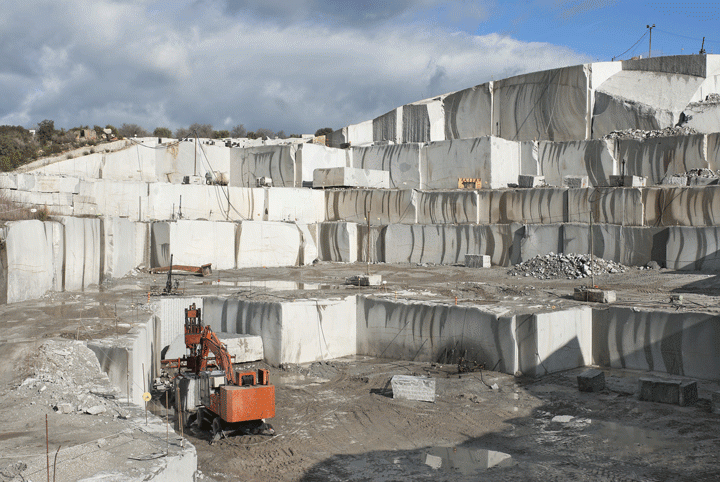A Journey With Granite Quarries in South Africa: Introduction Nature's Virtuosity
A Journey With Granite Quarries in South Africa: Introduction Nature's Virtuosity
Blog Article
Unveiling the Mysteries of Granite Quarrying: Where Strength and Sophistication Meet
The world of granite quarrying is a world where the raw stamina of nature assembles with human artistry to create structures that stand the examination of time with an air of sophistication. From the depths of quarries to the precise sprucing up in workshops, the process of transforming granite into building marvels is a complex dancing of practice and technology. As we peer right into the depths of this ancient craft, we start to discover the covert complexities that form the really essence of our built atmosphere.
The Origins of Granite Quarrying
In the record of building background, the origins of granite quarrying are shrouded in a tapestry of old craftsmanship and geological marvels. Dating back to ancient Egypt and Mesopotamia, the removal of granite from quarries noted the beginning of a journey that would at some point lead to the development of several of the world's most iconic frameworks.
Granite quarrying's roots can be traced to the knowledgeable craftsmens who recognized the rock's sturdiness and aesthetic allure. With a mix of primitive devices and sheer decision, these very early quarry workers uncovered granite blocks that would come to be the foundation of people.
As civilizations evolved, so did the methods of quarrying granite. The Romans, renowned for their design prowess, created innovative approaches for removing granite to construct monoliths, holy places, and roadways that stood the examination of time.
The tradition of these ancient quarrying practices continues to form modern style, with granite staying a symbol of stamina and style in building and construction projects around the globe. (granite quarries in south africa)
Devices of the Quarrying Profession
The development of granite quarrying techniques from old people to contemporary times highlights the vital duty played by the tools of the quarrying sell shaping the sector's methods. In ancient times, quarrying tools were fundamental, commonly consisting of knives, hammers, and wedges made from materials like bronze or iron. These tools called for significant manpower and time to extract granite blocks from quarries.

Furthermore, the introduction of pneumatic devices and high-powered equipment has dramatically minimized the physical labor called for in quarrying operations, enhancing employee security and performance. As the quarrying market remains to introduce, the tools of the profession remain at the leading edge of driving progression and forming the future of granite extraction.
Extracting Blocks of Granite
Making use of accuracy machinery and progressed methods, the extraction of granite blocks from quarries has become an advanced procedure in the contemporary quarrying market. Regulated blowing this up methods are then utilized to damage apart the granite into convenient sections.

Sprucing Up and Ending Up Strategies
To accomplish a flawless surface area on granite blocks, experienced craftsmens utilize a collection of thorough sprucing up and finishing strategies. After the preliminary extraction and forming processes, the granite obstructs go through an extensive sprucing up phase to boost their all-natural beauty and durability.
Along with sprucing up, finishing methods are applied to additional refine the granite's appearance. These methods may include flaming, honing, or cleaning, each offering unique textures and surfaces to match various visual preferences. Flaming, for instance, includes revealing the granite surface to heats to develop a harsh, distinctive surface, suitable for outside applications where slip-resistance is important. Sharpening, on the various other hand, gives a matte surface that is smooth to the touch, ideal for indoor countertops and floor covering. By thoroughly picking and using these brightening and completing techniques, craftsmens can transform raw granite blocks into elegant items that display both stamina and sophistication.

Environmental Effect and Sustainability
With the growing emphasis on environmental consciousness in the industry, granite quarrying practices are significantly scrutinized for their effect on all-natural resources and long-term sustainability. Additionally, the transportation of granite from quarries to refining facilities produces carbon discharges, better adding to ecological deterioration.
To minimize these influences and ensure sustainability in granite quarrying, industry stakeholders are embracing various actions. Implementing sophisticated modern technologies to minimize energy intake and water use, Find Out More recovering quarried land for her explanation ecological repair, and advertising responsible sourcing practices are some strategies being used. Certifications such as the Forest Stewardship Council (FSC) and the Leadership in Energy and Environmental Design (LEED) help consumers recognize environmentally friendly granite products.
Conclusion
Finally, granite quarrying is a procedure that requires specialized devices and techniques to remove blocks of granite and polish them to a high level of coating. While the ecological influence of quarrying can be considerable, efforts are being made to enhance sustainability techniques in the industry. In general, granite quarrying is a fragile equilibrium between utilizing the strength and elegance of this natural rock while minimizing its effect on the atmosphere.
Report this page